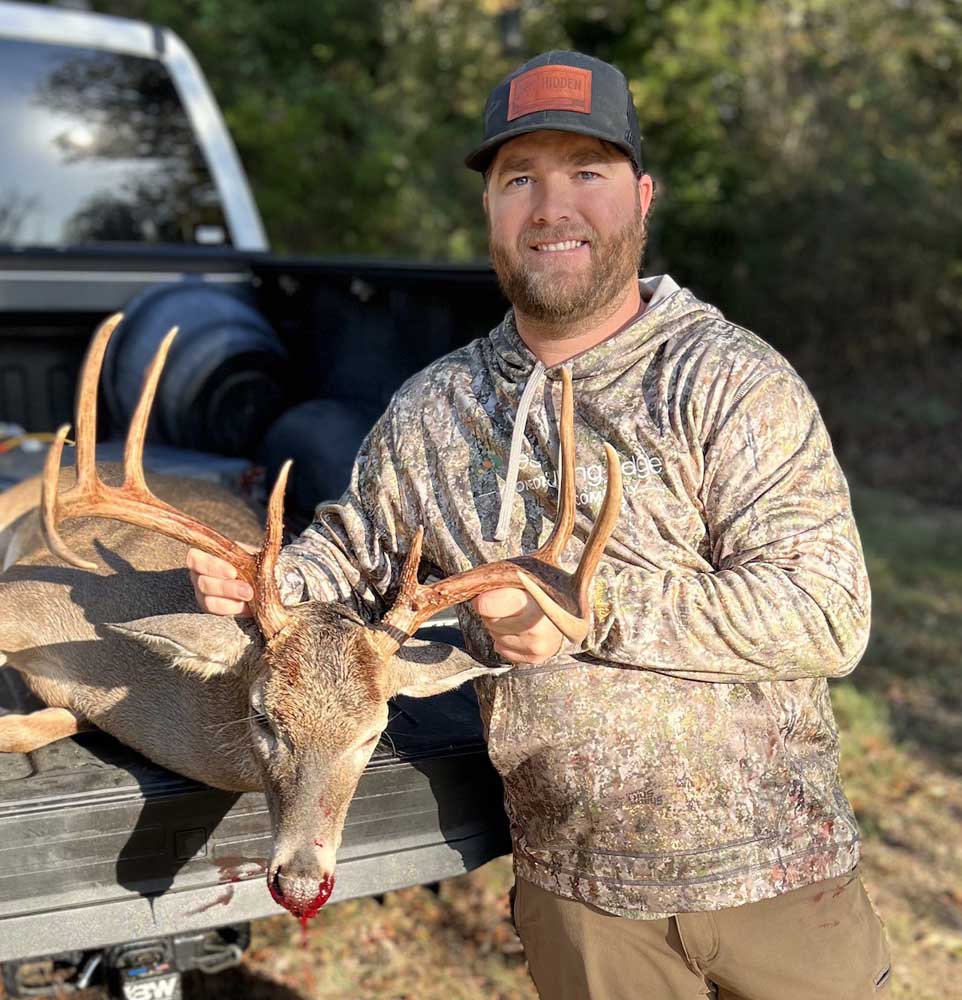Good & Plenty: Age and nutrition can affect antlers, but genetics are the key
Published 2:51 pm Friday, November 18, 2022

- Yantis’ Cord Burnett slipped away for an opening weekend hunt and brought home a nice 9-point that showed the effects of a dry summer on antler growth.
Unless you have been pouring out protein pellets like they were candy on Halloween, the last thing most deer hunters expect to see this year is bucks with quality antlers.
Sometimes, however, the stars just align and an unexpected quality buck comes into range. Sometimes a deer you expected to be trophy-class this year ends up being disappointing.
The latter was the case for Yantis’ Cord Burnett opening weekend when he took a 9-point Wood County buck scoring 120. While that may not be considered trophy quality in some parts of the state, on a 110-acre tract in Northeast Texas where the average 5½-year-old scores in the low 120s, it is not bad.
The kill was the culmination of years of watching the buck age. Burnett was expecting this to be the age it would be a quality mature buck.
“I had it at about 5. I have been watching it for two years,” said Burnett.
When he first saw the buck it was a 10-point, but only about 14 inches wide. This year he had it on camera as 18 inches wide, but only a 9-pointer with shorter tine length.
“I checked the game camera the first of October and had not seen it. Then I got pictures of it on Halloween. Then I got two more of it come in at 9 and 9:10. With the time change I knew it was going to be 8 or so,” Burnett said.
Burnett is the owner of Hidden Lakes Hunting Resort, and with its season open he generally works seven days a week. However, with the deer coming in he decided to take a quick trip to hunt, knowing if it did not show up at its regular times he would have to back out and leave.
He had seen three other bucks alone before the buck came walking out just before 8, minutes short of his quitting time. He took a quick look to identify the buck, and within 30 seconds had it on the ground.
For small acreage, Burnett said the farm has good genetics.
“There are two other deer out there that their tines are pretty good. They are only 14 inches wide, but they are only 3½ years old,” he said.
But genetics can only take a deer so far. In a year like this where deer struggled to find food throughout the antler growing cycle, it is not surprising Burnett’s deer’s antler quality slid some. There are multiple things that go into antler growth including age, genetics and food.
“As you know all three are important and how they interact plays a critical role in the quality of antlers a buck will develop,” said Alan Cain, Texas Parks and Wildlife Department’s deer program leader. “With that said I’d have to say that genetics is the most important factor. The buck has to have the genetic potential to grow large antlers.”
Cain explained if a buck’s genetics limits its potential to being an average 8-point, no amount of feed or even age will change that. That buck is destined to be an 8-pointer. Others are going to be quality bucks year after year no matter the conditions.
“He’s got to have the genetics that give him the potential to grow large antlers,” Cain said.
That said, Cain added all three factors are necessary for the buck to reach its maximum potential.
“In poor years, you may have a buck that still produces exceptional antlers, a trophy by anyone’s standards, but that buck is probably not maximizing his genetic potential because of poor nutritional conditions. Think about what that buck would grow in a good nutritional year, relative to a poor one. So nutrition still plays a role even for bucks with great genetics that will always produce good antlers,” the biologist said.
Age is also a key component with antler growth maxing out at 6½ to 7½.
“So if you harvest that buck at 3½ you’ll never give that buck a chance to see what he can turn into at maturity. When considering age and antler quality, it sometimes helps to think in the context of that buck’s cohort, how large are his antlers relative to other bucks in his age cohort,” Cain said.
In some ways the view of a trophy has gotten skewed by pen-reared deer and heavily protein-fed bucks under situations where they are protected until reaching 6 ½ or older. But in the real world on 110-acres in Wood County, there is an old-school reality where a 120-inch buck taken in a tough year is indeed a true trophy.






